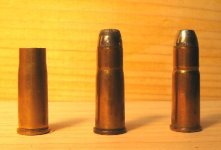Always wondered why some 38 Special cases have one or more cannelures while others from the same manufacturer have none?
What purpose do they serve? They must be there for a reason, it must cost the factory extra to make them.
What purpose do they serve? They must be there for a reason, it must cost the factory extra to make them.

